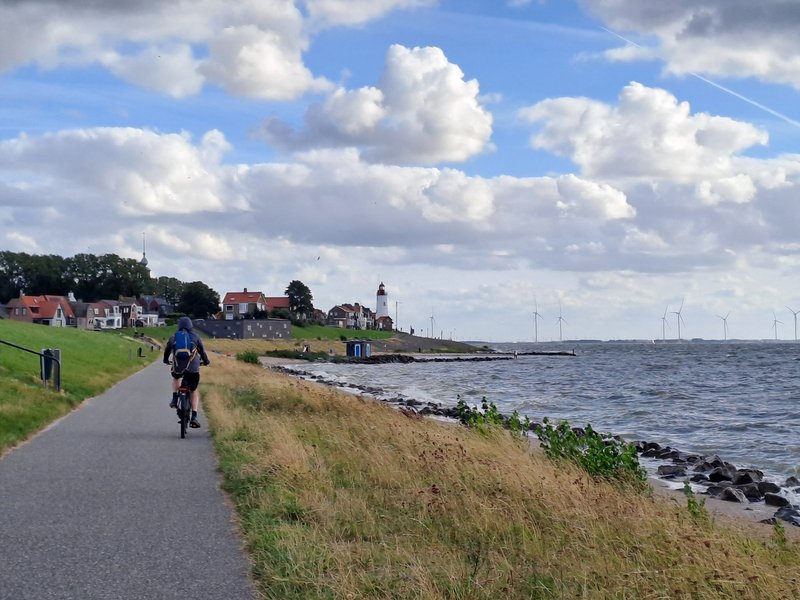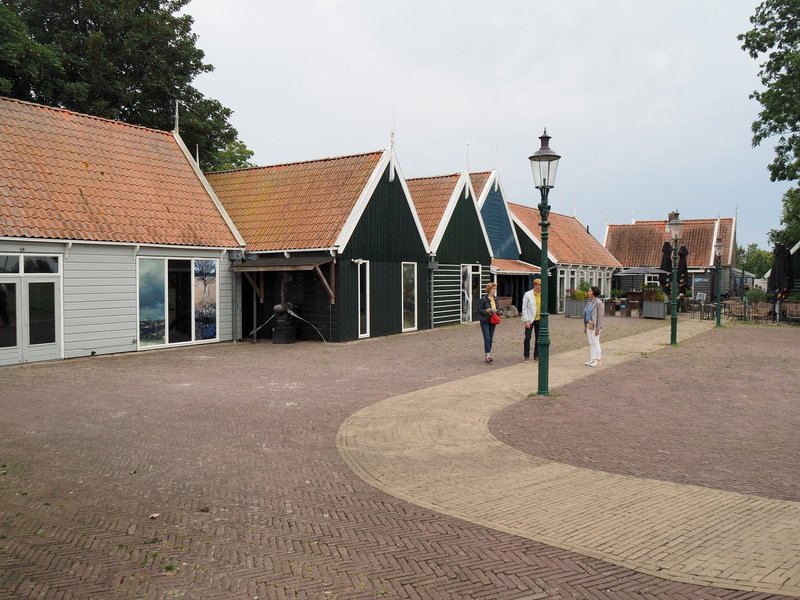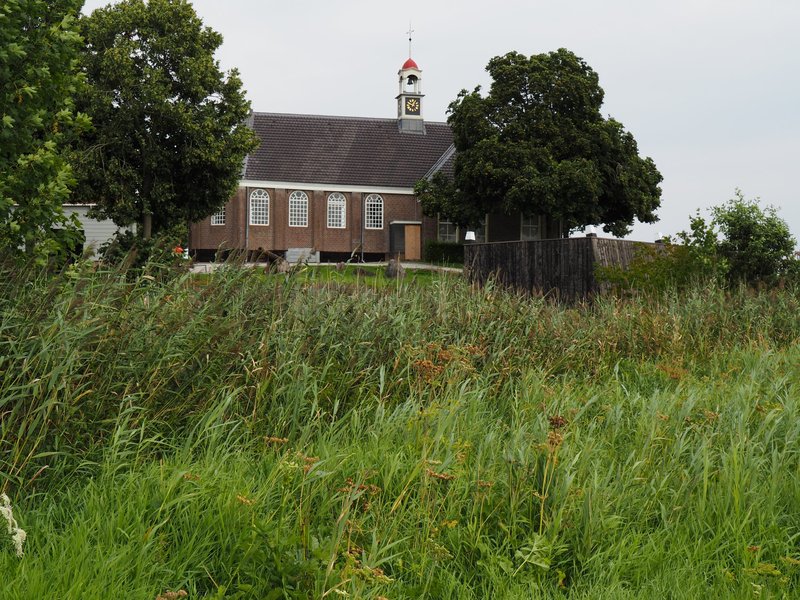There are sites that, despite their seemingly innocuous appearance, hide a striking reality!
We visited the site of the former Schokland Island in August 2024. What a shock!
We had an excellent approach to this site because, as there is no campsite in Schokland itself, we camped a few kilometers away in Urk, which is another former island in the Zuiderzee. The day before, we had decided to visit this port village by bike, crossing a wood from the campsite. In this wood, there are glacial stones discovered during the creation of the polders. Legend has it that the future father of a child from Urk had to go to Schokland to fetch "a key" which he then placed on his return on one of these half-submerged stones. At the exit of the wood, another forest is revealed: wind turbines! And then once you climb onto the dike, it is the North Sea that reveals itself. The strong impressions announce the island of Schokland because the sea is very powerful and the icy wind violent.

So the next day, we headed to Schokland. We couldn't understand the WHS site and its universal scope without a historical explanation:
In prehistoric times, the area around Schokland consisted of a large peat bog covered with sphagnum, a succulent plant. A landscape somewhat reminiscent of the Hooge Veluwe National Park or the High Fens Nature Park in Belgium. Semi-nomadic hunter-farmers lived there. This was roughly between 4,900 and 1,800 BC. Afterwards, the peat covered the entire area, leaving no room for humans except for a few mounds like Urk and Schokland.
In the Middle Ages, however, lords gave land to settlers to drain and work the land. Naturally, the settlers settled on the hills. Draining the land for agriculture was a very bad idea because it had the effect of compacting the peat. In some places, it would have descended by 8 m, a height sufficient for the North Sea to reclaim the fields by breaking the dunes on stormy days or high tides. In short, and this is what is incredible: it is the action of Man that is at the origin of the reclamation of the sea!
What remains are the hilltop villages that become islands, where life becomes increasingly precarious. Farmers become sailors and fishermen. Wooden dikes are built that must be constantly reinforced, they fill in as much as possible, and they build duckboards to move around. For those who have seen Jane Campion's Oscar-winning film The Piano, that's exactly it: you had to do a lot of gymnastics to cross each other on the duckboard without falling into the mud.
As the island sank more and more, the sea became more and more aggressive, and flooding became more and more frequent, it was finally decided to evacuate the island in 1859 BC. The village was completely destroyed by the inhabitants upon their departure, except for the port.
It was only in 1942, a century later, with the construction of the Afsluitdijk dike which created the Ijsselmeer (formerly Zuiderzee) and the polders that the island emerged again on... dry land! (Intro photo).
The former island of Schokland was listed as a UNESCO World Heritage Site in 1995. It alone expresses the ongoing struggle between Homo Sapiens and water... It sheds some light on the imagination that people who live in humid regions on Earth must use to manage water in the most useful way possible! Ultimately, as you look up, this region of the Netherlands is nothing more than a vast, tamed delta, the delta of the Rhine, the Meuse and the Scheldt!

The museum explains this evolution and the harshness of life for the inhabitants of Schokland very well. I remember a painting depicting the village seen from a boat on the sea on a stormy day: you can only see the roof of the church!!! The kind hostess at the reception gave us an explanatory booklet in French, thank you to her. It contains walking or cycling routes in the surrounding area.

The proposal of the architect in charge of the museum's construction is a very good idea: he rebuilt traditional houses identically. I don't know if the church, the only built vestige of the village, had to be rebuilt or not. There are various artifacts all around the museum and the church that send shivers down your spine. Don't hesitate to go down the dike to observe the village from below as in the painting: you won't avoid the shivers of fear worthy of a good novel...
More on
Comments
No comments yet.
